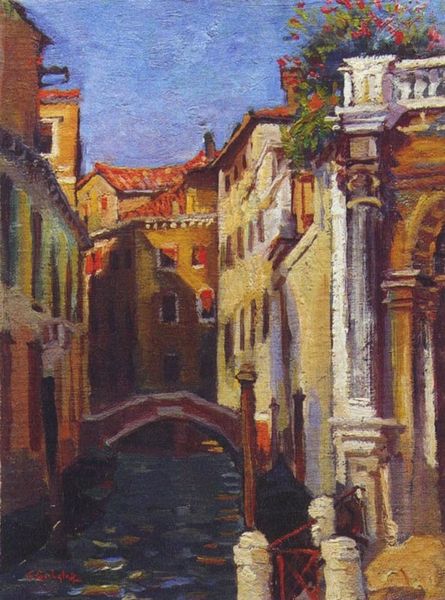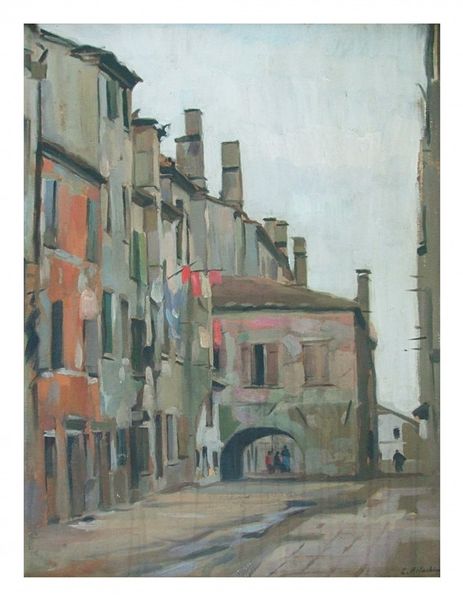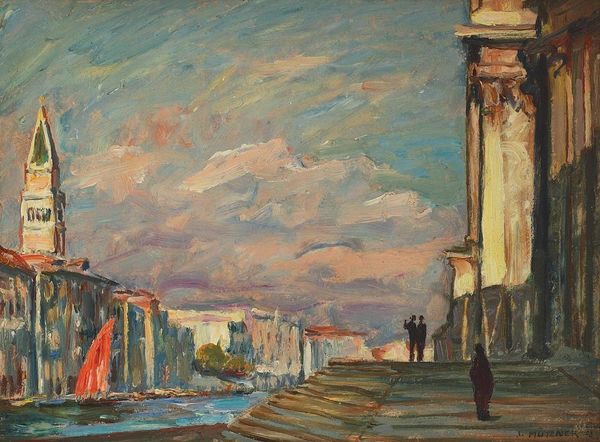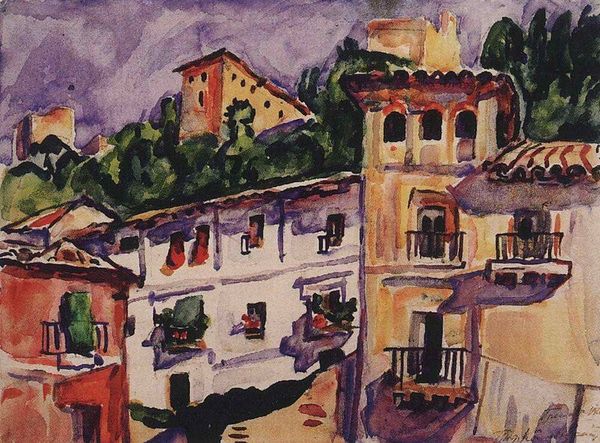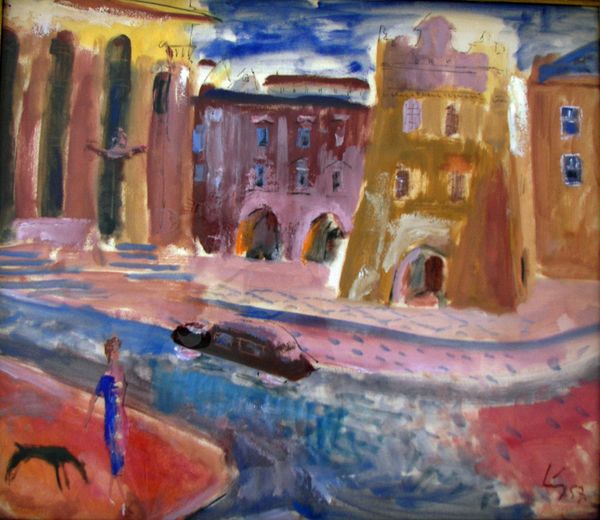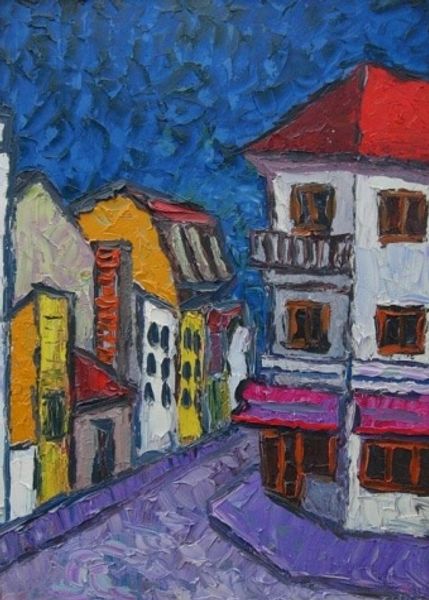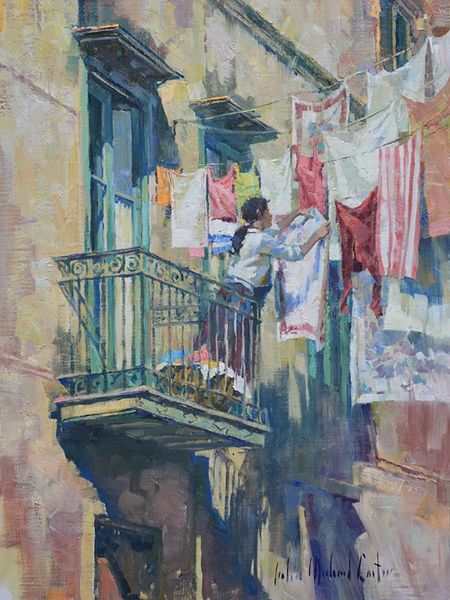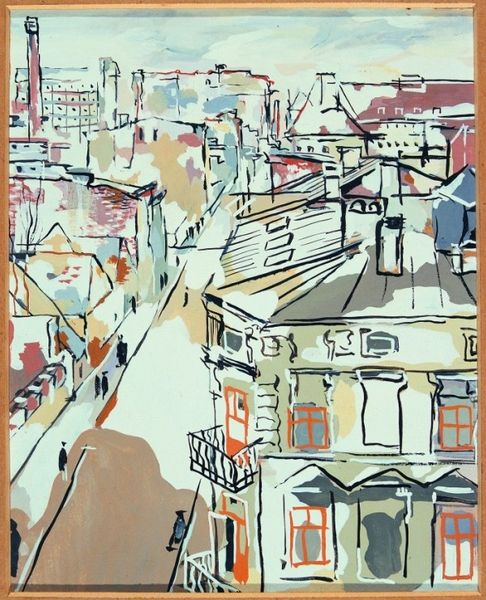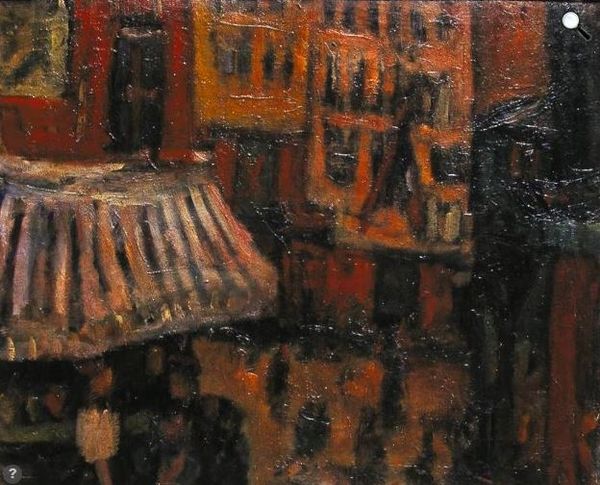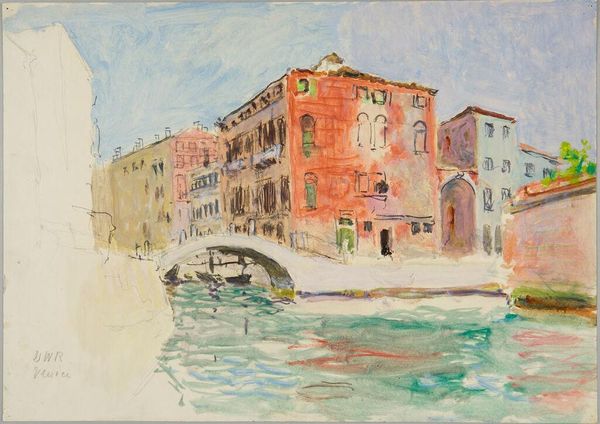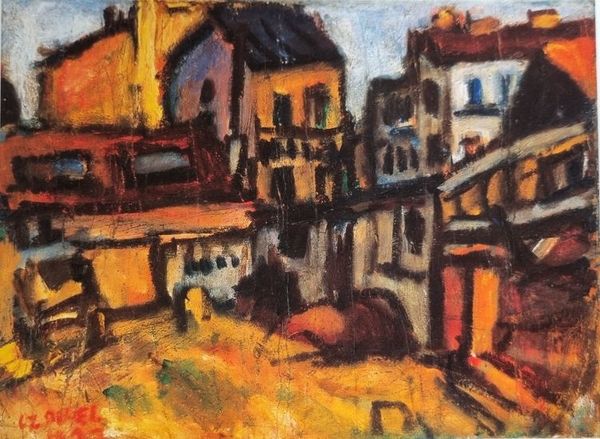
painting, plein-air, oil-paint
#
painting
#
plein-air
#
oil-paint
#
landscape
#
impressionist landscape
#
oil painting
#
seascape
#
water
#
cityscape
#
realism
Copyright: Hubertine Heijermans,Fair Use
Editor: Here we have Hubertine Heijermans’ oil painting, titled “Villajoiosa”. I'm immediately drawn to how the buildings are stacked and reflect on what seems like a wet street. How should we interpret it? Curator: For me, it’s about the materials and the processes. Oil paint allowed for the creation of such luminous color, giving it an "en plein air" feeling, which required portability of supplies. The consumption of such scenery was linked to growing tourism. Do you notice how this affected the subject of the painting? Editor: I do now that you mention it! It does have the air of a postcard or travel painting made to sell. But do you think it romanticizes labor? Curator: That's an astute point. It hides labor even while displaying a very particular form of lived space shaped by a variety of social roles! Where are the people that built this scene in the painting itself? What does the painting surface do to obscure evidence of those laborers who built the site to begin with? Editor: That's really interesting. I was only focusing on the city at first glance and how colorful and interesting it seemed. Curator: That's the clever thing about material. We get seduced by color and easily overlook so much more about what goes into a piece of art! Editor: I see what you mean. It makes me think differently about plein air painting now, especially about tourism. Curator: Indeed. Thinking materially invites deeper investigation of production and its social ramifications!
Comments
No comments
Be the first to comment and join the conversation on the ultimate creative platform.
